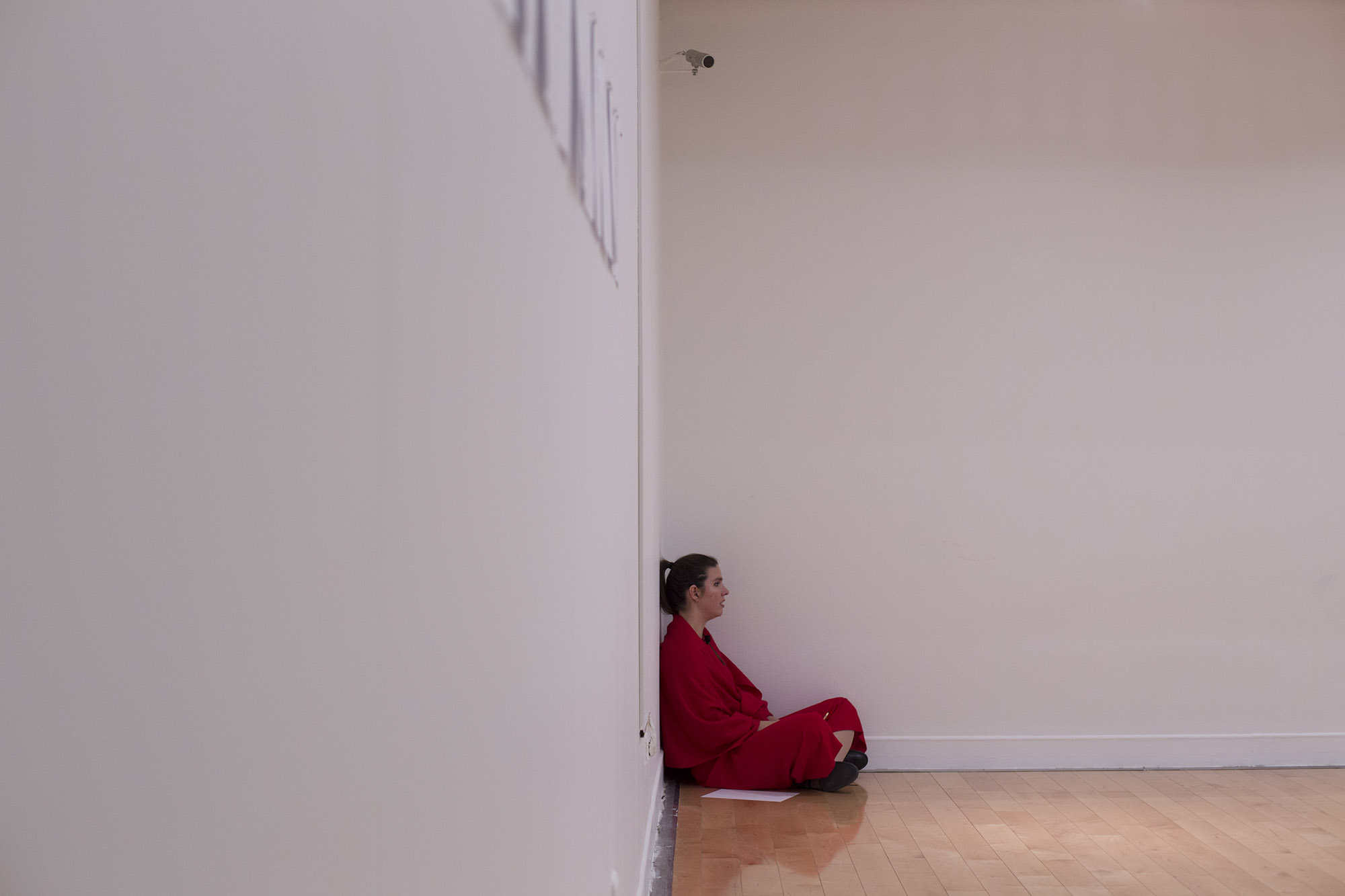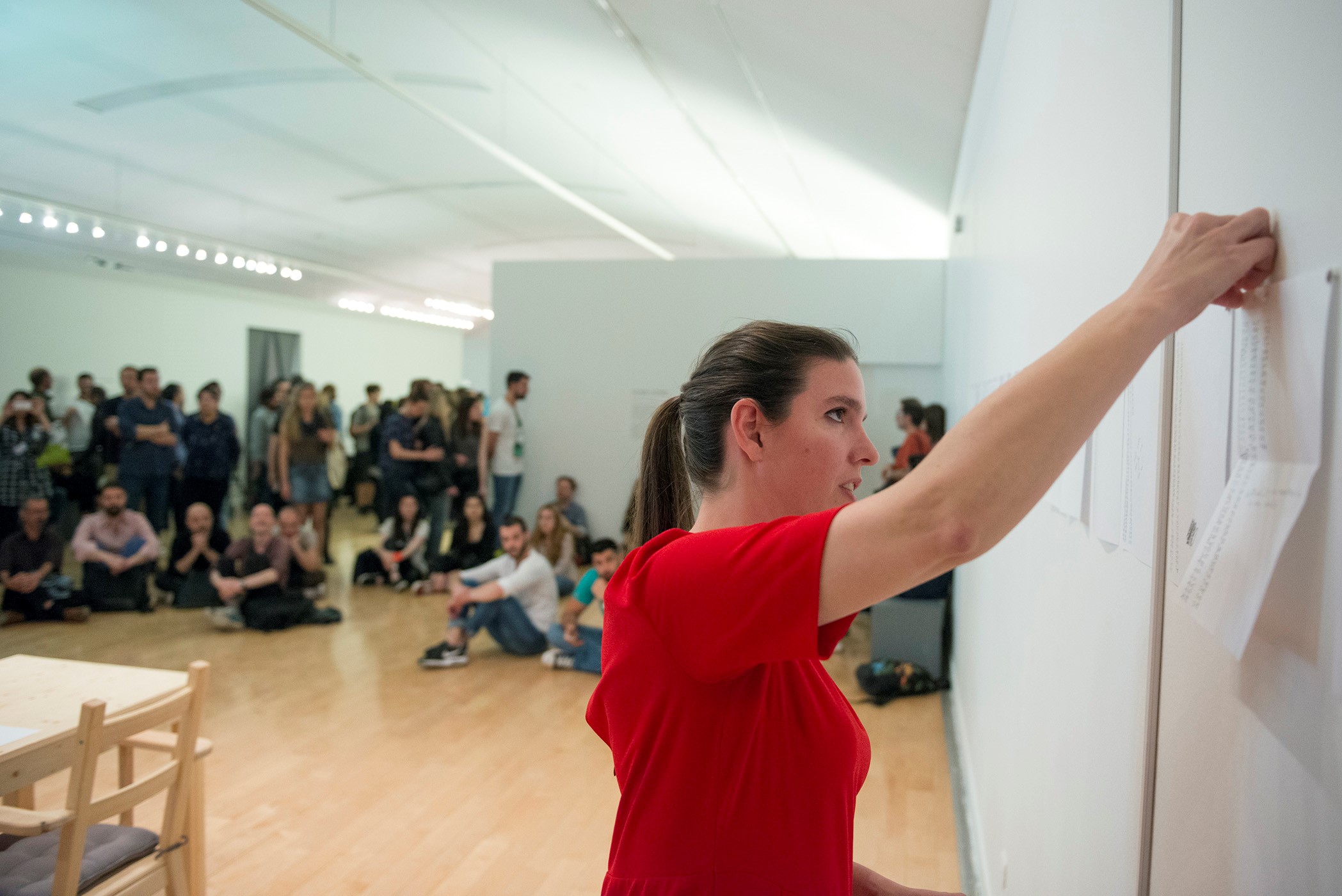AS ONE
AS ONE foi um projeto dedicado à performance art na Grécia, com colaboração, o NEON + MAI teve como objetivo fornecer uma plataforma e ajudar a promover uma nova geração de artistas de performance gregos. Vários artistas gregos emergentes foram selecionados por Paula Garcia e Serge Le Borgne
AS ONE was project dedicated to performance art in Greece, with collaboration, NEON + MAI aimed to provide a platform and help foster a new generation of Greek performance artists. A number of emerging greek artists were selected by Paula Garcia and Serge Le Borgne
Artists: Yota Argyropoulou, Virginia Mastrogiannaki; Lambros Pigounis; Nancy Stamatopoulou; Thodoris Trampas; Despina Zacharopoulou; Rafael Abdal and Jessica Goes; Yannis Adoniou; Thanassis Akokkalidis; Elena Antoniou; Spyros Charalampopoulos; Dimitris Chimonas; Amanda Coogan; Thomas Diafas; Serafita Grigoriadou; Maria Herranz; Giannis Karounis; Marianna Kavallieratos; Alexandros Michail; Kira O’Reilly; Katerina Oikonomou; Nikolaos; Anastasia Papatheodorou; Yiannis Pappas; Pashias; Evgenia Tsanana; Christina Vasileiou.
Benaki Museum | Pireos St. Annexe, Athens
10 March – 24 April 2016
https://www.mai.art/work/asone
Publication: Newspaper_AS_ONE
Photos by Natalia Tsoukala and Panos Kokkinias
Maria Herranz – Medea: Impulse & Ear
In this piece, the viewer and actress will engage in a symbiotic relationship that will result in the actress’ impulsive selection of a tract of text from Seneca’s Medea. Chairs will be both secured to the floor and freely situated in such a way as to be most conducive to a natural engagement between the actress and the viewer. As, over the course of the day, Medea’s various monologues are repeated in ever-changing scenarios, the nature of Medea’s tragedy, the actress’ interpretation and the exchange between actress and viewer will likely greatly morph, as will the depth of one of Medea’s subtler plights: to be a stranger in a strange land.
Nesta peça, o espectador e a atriz se engajarão em uma relação simbiótica que resultará na seleção impulsiva da atriz de um trecho de texto da Medea de Sêneca. As cadeiras serão presas ao chão e situadas livremente de tal maneira que sejam mais propícias a um engajamento natural entre a atriz e o espectador. Como, ao longo do dia, os vários monólogos de Medea são repetidos em cenários em constante mudança, a natureza da tragédia de Medea, a interpretação da atriz e a troca entre atriz e espectador provavelmente se transformarão, assim como a profundidade de uma das meditações de Medea. lutas sutis: ser um estranho em uma terra estranha



Despina Zacharopoulou – Corner Time
This performance explores the mental spaces that open up during control exchange in human relationships. Over the course of seven weeks, for eight hours per day, the artist will “host” the audience in an enclosed space and perform a set of actions combining methods and goals drawn from practices of meditation, discipline and restriction. The goal of this piece is to create potent, experimental situations of control exchange while playing with the multiple functions of the gaze: a mechanism for introspection, surveillance, recognition and communication.
Essa performance explora os espaços mentais que se abrem durante a troca de controle nas relações humanas. Ao longo de sete semanas, durante oito horas por dia, o artista “hospedará” o público em um espaço fechado e realizará um conjunto de ações combinando métodos e objetivos extraídos de práticas de meditação, disciplina e restrição. O objetivo desta peça é criar situações experimentais e potentes de troca de controle enquanto se joga com as múltiplas funções do olhar: um mecanismo de introspecção, vigilância, reconhecimento e comunicação.
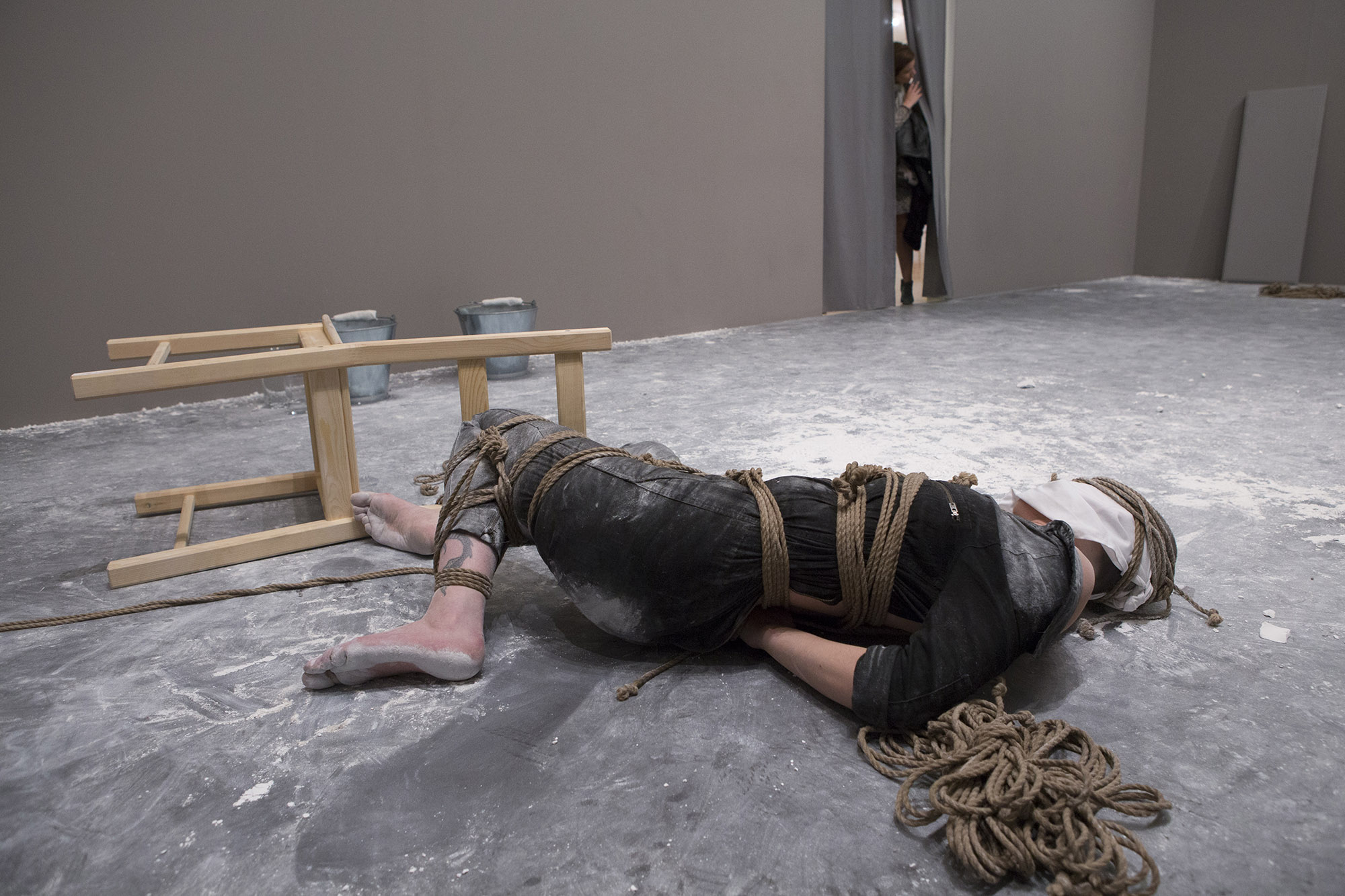
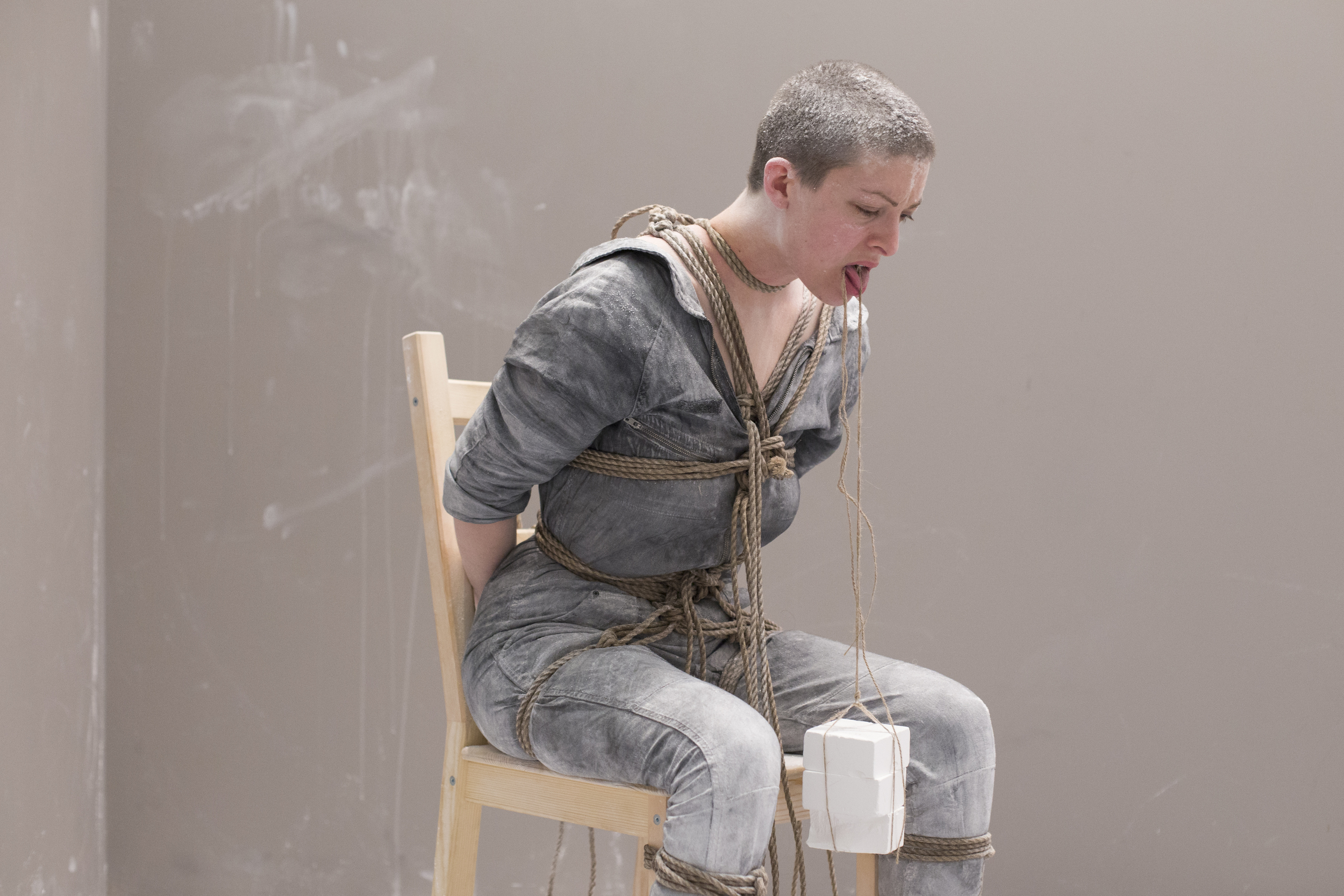

Lambros Pigounis – Micropolitics of Noise
Driven by his research in acoustic ecology in relation to the human body, Lambros Pigounis will be attempting to give physical form to the micropolitics of sound-signaling threats and to demonstrate the ways in which noise can be used as a form of violence that also shapes the soundscape of the future. He will create a long-durational situation in which his body is exposed to subsonic vibrational forces, triggered by the presence of people around him. Left in a state of constant threat for seven weeks, the body unconsciously experiences three kinds of fear-induced reactions: fight — flight — freeze.
Impulsionado por sua pesquisa em ecologia acústica em relação ao corpo humano, Lambros Pigounis tentará dar forma física à micropolítica das ameaças de sinalização sonora e demonstrar as maneiras pelas quais o ruído pode ser usado como uma forma de violência que também molda a paisagem sonora do futuro. Ele criará uma situação de longa duração em que seu corpo está exposto a forças vibracionais subsônicas, desencadeadas pela presença de pessoas ao seu redor. Deixado em um estado de constante ameaça por sete semanas, o corpo experimenta inconscientemente três tipos de reações induzidas pelo medo: congelamento de luta e fuga.
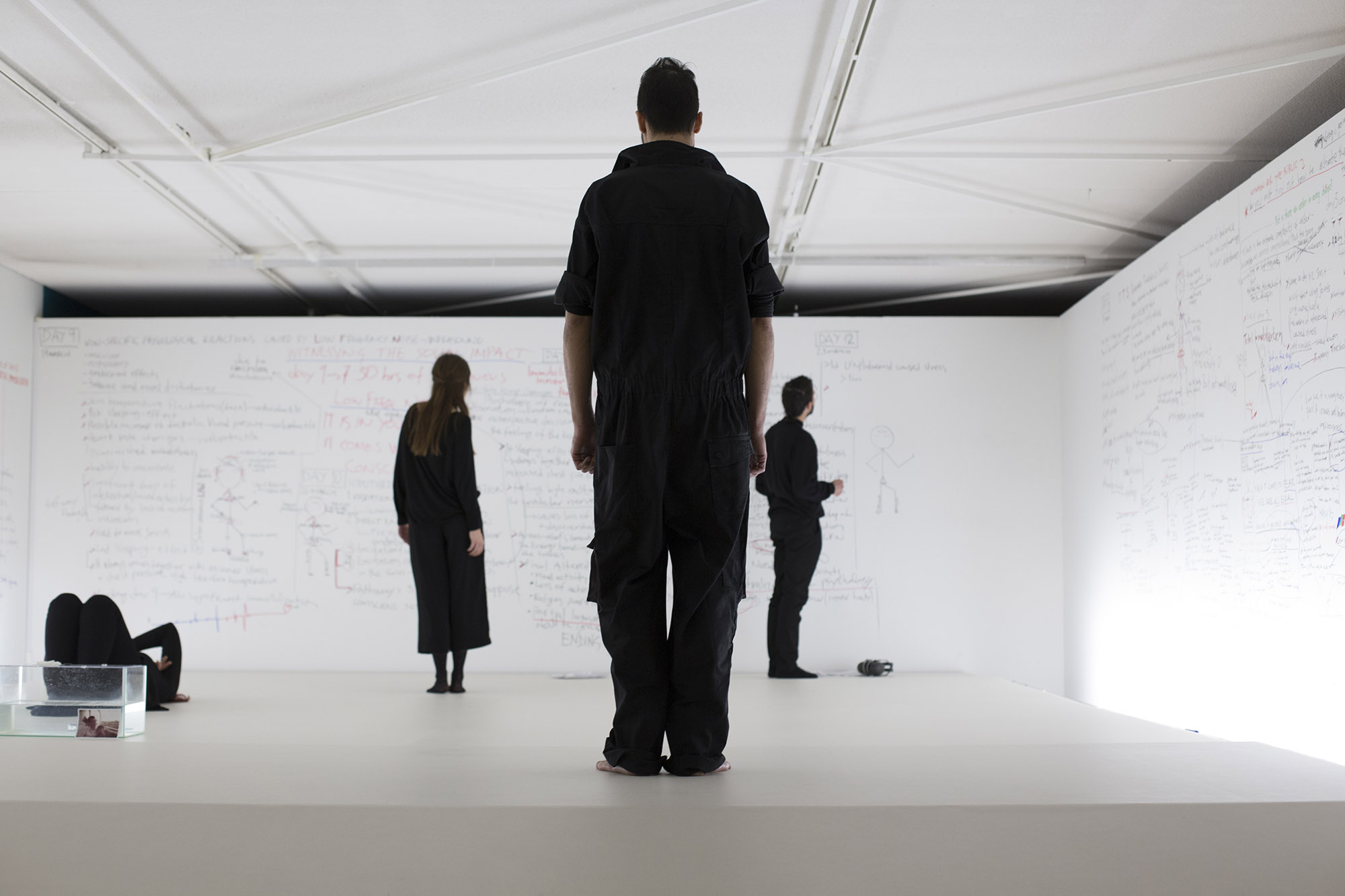

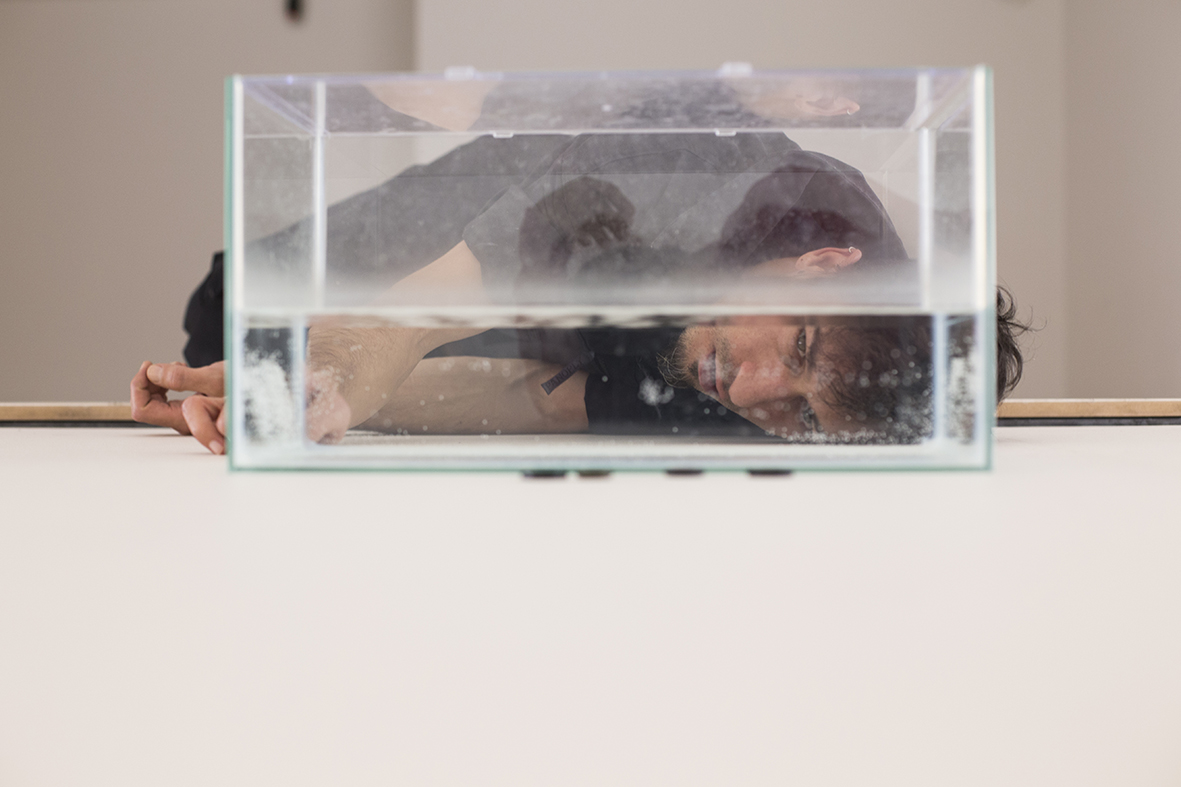
Yota Argyropoulou – One Person at a Time
Two identical rooms offer a place to explore two sides of a “mirror” — what is real and what is a construct. Yota Argyropoulou enters into a fictional world of emotional experience and invites visitors to follow her into action and inaction, detachment and connection. For eight hours each day and for seven weeks, one room will be her own truth, where time is suspended, a place of privacy “shattered” by the arrival of the real: the visitor in the other room. The glass between them isolates but at the same time invites communication, intimacy, and moments of genuine connection.
Duas salas idênticas oferecem um lugar para explorar os dois lados de um “espelho” – o que é real e o que é um constructo. Yota Argyropoulou entra em um mundo fictício de experiência emocional e convida os visitantes a segui-la em ação e inação, desapego e conexão. Durante oito horas por dia e por sete semanas, um quarto será sua própria verdade, onde o tempo é suspenso, um lugar de privacidade “destruído” pela chegada do real: o visitante no outro quarto. O vidro entre eles isola, mas ao mesmo tempo, convida a comunicação, a intimidade e os momentos de conexão genuína.
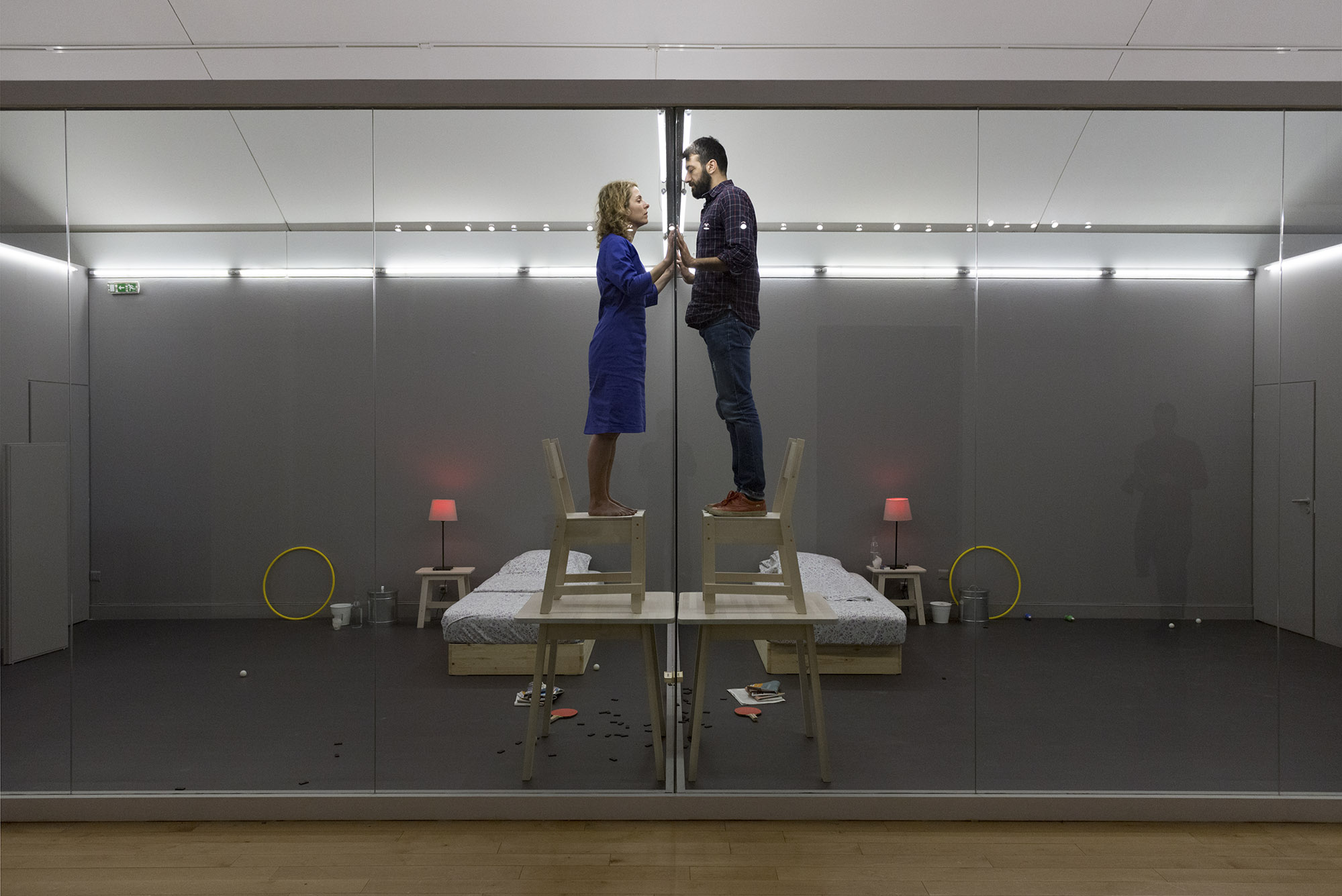
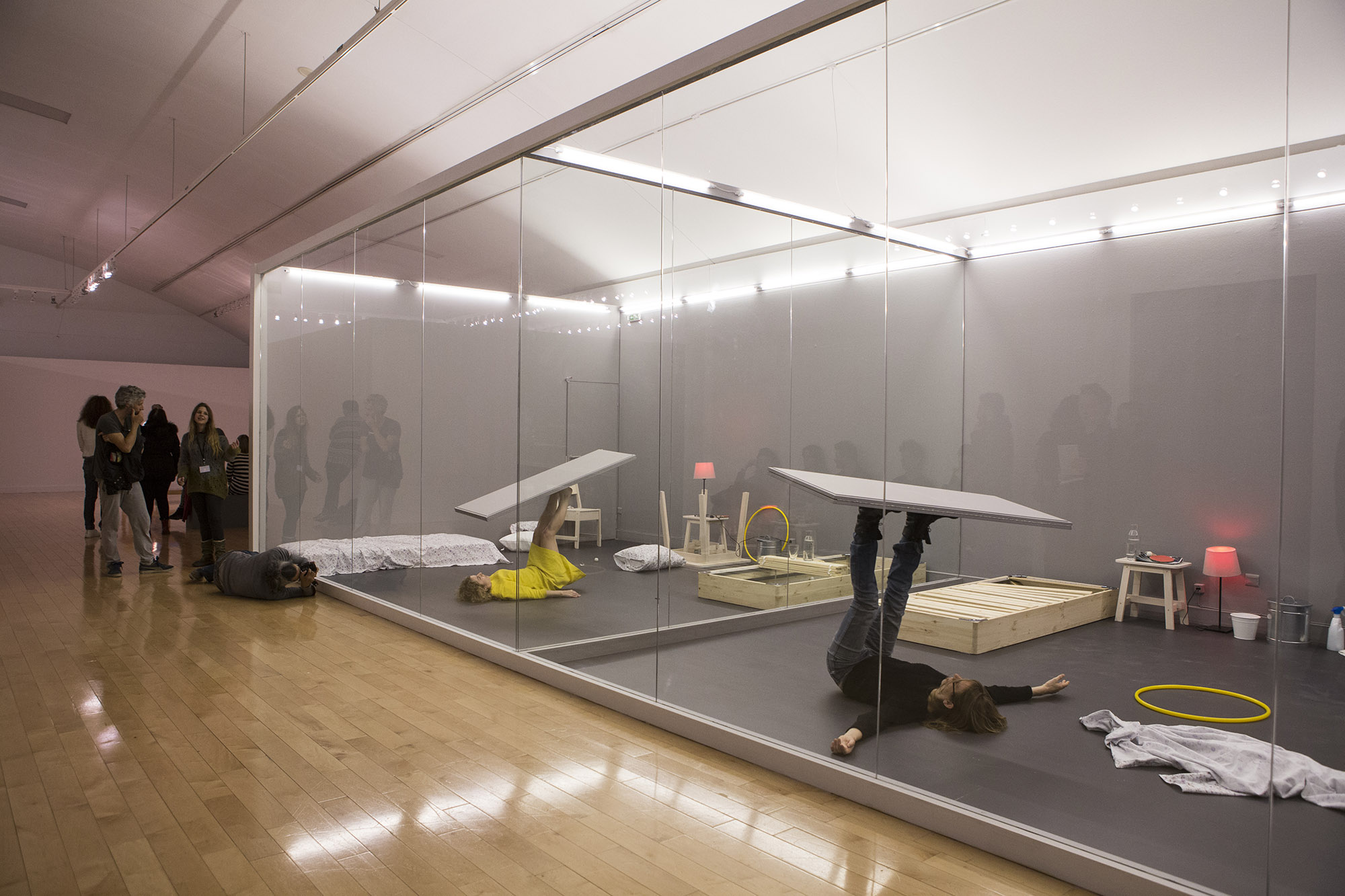
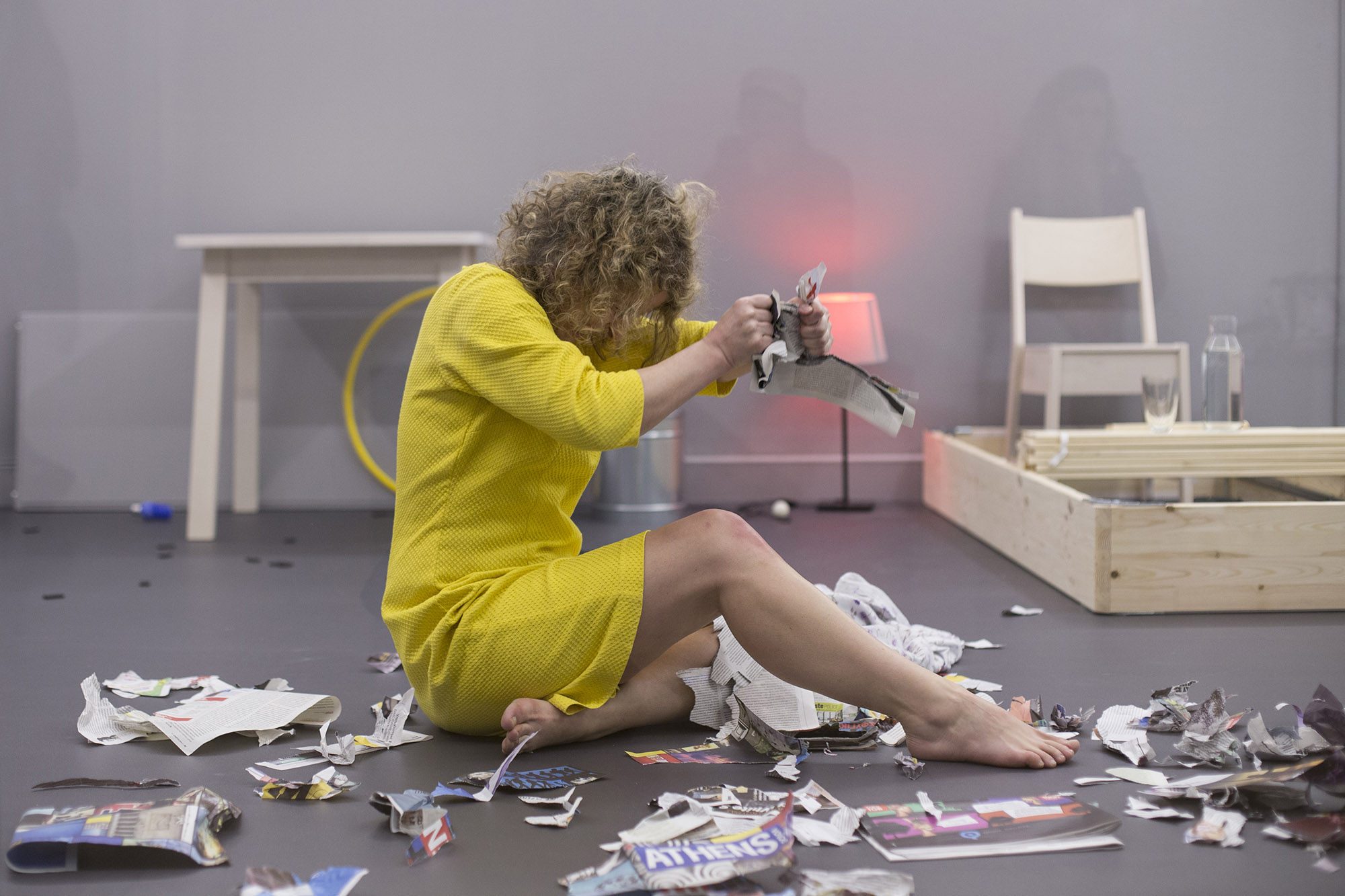
Thodoris Trampas – Pangaia
Nature and creation, division and composition. Thodoris Trampas delineates a process of union through destruction, and the need for reconciliation with the other side. In an enclosed space, six metres by seven, for seven weeks and eight hours each day, the body is set against the material world — a large piece of rock — in order to create its replica in plaster. This copying, this repetition, is a way of experiencing the existence of nature from scratch. Smashing the rock differentiates the copy from the original, and the resulting fragments accumulate and change the mass of the material — transform it, give it new form.
Natureza e criação, divisão e composição. Thodoris Trampas delineia um processo de união através da destruição e a necessidade de reconciliação com o outro lado. Em um espaço fechado, seis metros por sete, durante sete semanas e oito horas por dia, o corpo é colocado contra o mundo material – um grande pedaço de rocha – para criar sua réplica em gesso. Essa cópia, essa repetição, é uma maneira de experimentar a existência da natureza a partir do zero. Smashing the rock diferencia a cópia do original, e os fragmentos resultantes se acumulam e mudam a massa do material – transformá-lo, dar-lhe nova forma.

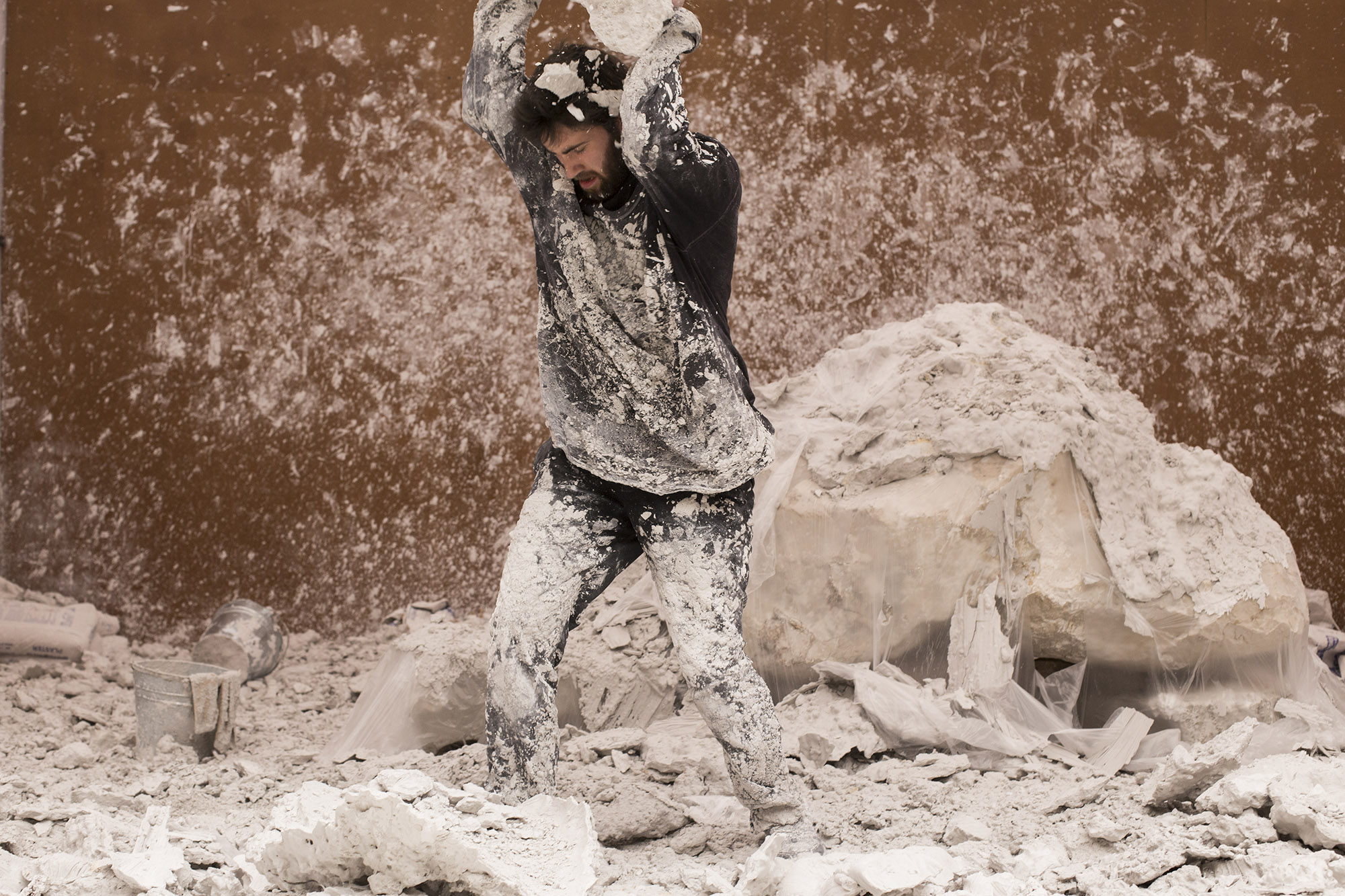

Nancy Stamatopoulou – White Cave
In this allegory of Plato’s Cave, Nancy Stamatopoulou directs her own “spiritual confinement” within a reality composed of everyday objects. For eight hours each day over the course of seven weeks, the artist will remain within the narrow limits set by the sights of a camera lens, confined inside her own personal “cave” and the shadowy re-enactment of a personal truth. Time passes slowly, like the movement of a turtle. Actions are repetitious, like a punishment. Reality feels remote, the possibility of escape imperceptible.
Nesta alegoria da Caverna de Platão, Nancy Stamatopoulou dirige seu próprio “confinamento espiritual” dentro de uma realidade composta de objetos do cotidiano. Durante oito horas por dia ao longo de sete semanas, a artista permanecerá dentro dos limites estreitos estabelecidos pelas vistas de uma lente de câmera, confinada dentro de sua “caverna” pessoal e da sombria reconstituição de uma verdade pessoal. O tempo passa devagar, como o movimento de uma tartaruga. As ações são repetitivas, como uma punição. A realidade parece remota, a possibilidade de fuga imperceptível.



Virginia Mastrogiannaki – Jargon
A human clock measures time as it passes, as it tests the limits of body and mind. Virginia Mastrogiannaki renders her own body an analogue machine, a tool for calculating time, the hours we work, the time of the space in which she finds herself. Her mind battles to remain focused on every minute, eight hours a day, for seven weeks. This is an ascetic act that nevertheless links her with others through the overlay of time and place. The inability of the mind to follow the passage of time means mistakes are unavoidable, but notes taken on paper restore the spirit to the task at hand.
Um relógio humano mede o tempo à medida que passa, pois testa os limites do corpo e da mente. Virginia Mastrogiannaki faz de seu próprio corpo uma máquina analógica, uma ferramenta para calcular o tempo, as horas que trabalhamos, o tempo do espaço em que ela se encontra. Sua mente luta para permanecer focada a cada minuto, oito horas por dia, durante sete semanas. Este é um ato ascético que, no entanto, a liga aos outros através da sobreposição de tempo e lugar. A incapacidade da mente para acompanhar a passagem do tempo significa que os erros são inevitáveis, mas as anotações feitas no papel restauram o espírito para a tarefa em questão.
